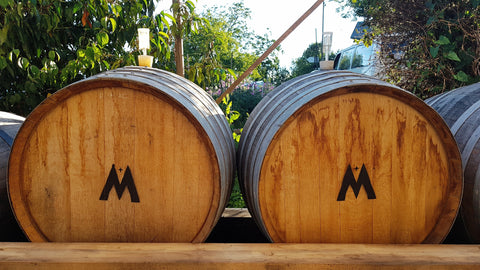The wild beer
What is a wild beer?
Ah the beer! On Buvanceit's impossible to miss this beverage whose existence goes back thousands of years, if we believe historians and archaeologists. Beer would thus be the first alcoholic drink created by Man. Originally, it was probably a cereal porridge which would have been left in the open air involuntarily and whose transformation into beer would have been made possible thanks to the yeasts present in the air, in the water or even on the cereals themselves. This first beer was certainly wild!

In the brewing world, we can speak of spontaneous fermentation when the brewer does not introduce yeast into the wort. It is then common to speak of wild yeast or indigenous yeast.
To discover beers brewed by spontaneous fermentation, let's turn to Belgium. Indeed, several breweries have continued to brew an ancestral style of beer called "lambic". The production of lambic requires water, malted barley, wheat and hops. The wort made from these ingredients will then spend a night cooling in a tank called "koelship" and it is at this time that it will be inoculated by wild yeasts from the environment. The lambic will then be transferred to oak barrels to ferment and mature for one or more years. The blend of lambics matured for 1, 2 and 3 years will produce the famous gueuzes, which can be found in Buvance through those of the Cantillon BreweryBrewery, the Brewery 3 Fonteinen or the Gueuzerie Tilquin.

If spontaneous fermentation beers can be qualified as wild beers, or even living beers, it would be too reductive not to include other styles of beers, which we owe to the creativity of our craft breweries.
Many of them have chosen to give a greater place to nature and time in their brewing process, either by being inspired by the traditional Belgian method, or by revisiting it, or even by carrying out real experiments. Among the methods used, we find for example that of mixed fermentation, which is the result of a first fermentation in a controlled environment and a second which is the result of the action of wild yeasts. We can now also find beers made with fruit refermentations (such as beer Assemblage 8 from the Popihn brewery), fermentations on lees or grape marc (like the beer Le Pic from the Sacrilège brewery) or co-fermentations, where the grape must is integrated with the cereal must directly in the vat (this is the case of the beer Quart de Red beer from the La Malpolon brewery).

In France, more and more beers related to the world of wine are brewed every year. It must be said that the wine tradition is historically implanted in France and this is an asset for our breweries, which benefit from a richer territory of creation than some of our neighbors.
Because if the notion of wild beer is characterized by its fermentation process, by the place given to time and nature, it also goes hand in hand with the notion of terroir, a notion of terroir that is found in these wild beers through the role of their environment and the local ingredients used in their making.
Because nature plays a major role, it gives them a non-reproducible attribute: each year, a new vintage that will be slightly different from the previous one. Their longer production time, through their maturation of several months and years in barrels, also explains their cost which is higher than that of a traditional craft beer.
But what about the taste?
Very often, we find a greater complexity of tastes in these beers, with a wider range of flavors and aromas. We can often identify some common markers: a certain lightness, a touch of acidity, a rustic side as well as a less pronounced fizz. Because of their diversity, they can seduce and surprise those who think they don't like beer. Some people will even find the elegance of great wines.

These beers share a common point with wine: their taste will continue to evolve over time. They can be kept in the cellar, laid down if they are corked, and can then be enjoyed 5, 10 or even 20 years later for some. We also advise to taste them at a temperature around 8 - 14°, in order to let all their aromas express themselves.
These beers, because of their taste and because of their more natural, more local production method, are part of what drives us and makes us passionate at Buvance. We will regularly share our favorites with you and help you discover more about the people who brew them.
See the selection of wild beers on Buvance.




